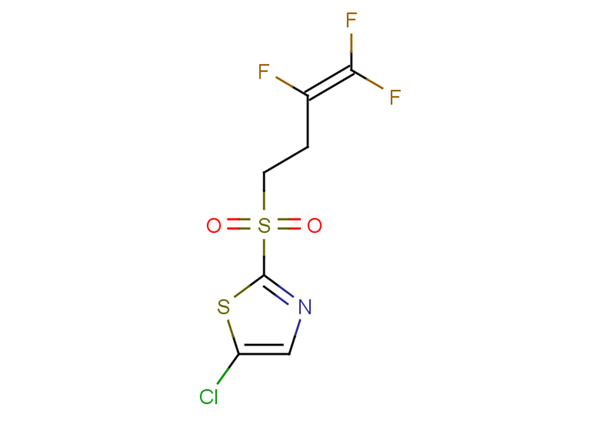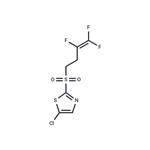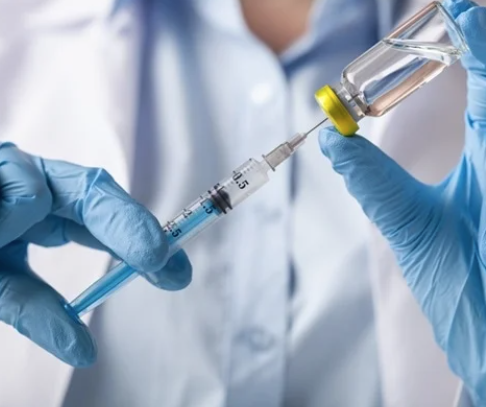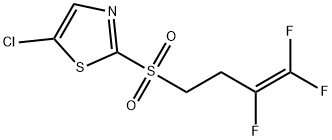Efficacy of Various Application Methods of Fluensulfone for Managing Root-knot Nematodes in Vegetables
May 7,2024
Fluensulfone is a new nonfumigant nematicide in the fluoroalkenyl chemical class which received an EPA registration in September 2014 for control of plantparasitic nematodes in cucurbits and fruiting vegetables. It has a unique but unknown mode of action and is a true nematicide . Unlike fumigant nematicides, fluensulfone is a water-soluble compound and moves through the soil water. It has a lower mammalian toxicity (LD50. 500 mg/kg) than organophosphates and carbamates, which allows for safer application.

A field experiment was conducted in 2012 and 2013 to evaluate the efficacy of various application methods of fluensulfone for control of Meloidogyne spp. in cucumber (Cucumis sativus). Treatments of fluensulfone (3.0 kg a.i./ha) were applied either as preplant incorporation (PPI) or via different drip irrigation methods: drip without pulse irrigation (Drip NP), pulse irrigation 1 hr after treatment (Drip +1P), and treatment at the same time as pulse irrigation (Drip =P). The experiment had eight replications per treatment and also included a PPI treatment of oxamyl (22.5 kg a.i./ha) and a nontreated control. Compared to the control, neither the oxamyl nor the fluensulfone PPI treatments reduced root galling by Meloidogyne spp. in cucumber.
Among the drip treatments, Drip NP and Drip +1P reduced root galling compared to the control. Cucumber yield was greater in all fluensulfone treatments than in the control. In a growth-chamber experiment, the systemic activity and phytotoxicity of fluensulfone were also evaluated on tomato (Solanum lycopersicum), eggplant (Solanum melongena), cucumber, and squash (Curcurbita pepo). At the seedling stage, foliage of each crop was sprayed with fluensulfone at 3, 6, and 12 g a.i./liter, oxamyl at 4.8 g a.i./liter, or water (nontreated control). Each plant was inoculated with Meloidogyne incognita juveniles 2 d after treatment. There were six replications per treatment and the experiment was conducted twice. Foliar applications of fluensulfone reduced plant vigor and dry weight of eggplant and tomato, but not cucumber or squash; application of oxamyl had no effect on the vigor or weight of any of the crops.
Typically, only the highest rate of fluensulfone was phytotoxic to eggplant and tomato. Tomato was the only crop tested in which there was a reduction in the number of nematodes or galls when fluensulfone or oxamyl was applied to the foliage compared to the nontreated control. This study demonstrates that control of Meloidogyne spp. may be obtained by drip and foliar applications of fluensulfone; however, the systemic activity of fluensulfone is crop specific and there is a risk of phytotoxicity with foliar applications.
Fluensulfone was shown in a study on the management of plant-parasitic nematodes in potato production. Pre-plant applications of fluensulfone nematicide at various rates (3, 4, 6, and 8 l/ha) and the commercial standard fumigant 1,3-dichloropropene (1,3-D) were tested for management of plant-parasitic nematodes in three field trials from 2016 to 2018. Both fluensulfone, at all rates, and 1,3-D consistently decreased sting nematode abundance relative to the untreated control at harvest. Neither fluensulfone nor 1,3-D affected stubby-root nematode abundances at harvest. Efficacy of fluensulfone and 1,3-D for lesion nematode (Pratylenchus sp.) management varied by year. In 2016 and 2018, fluensulfone at most rates and 1,3-D increased marketable potato yield relative to the untreated control with increases by 49 to 66% and 33 to 55% in 2016 and 2018, respectively. In 2017, fluensulfone at lower rates (3, 4, and 6 l/ha) increased marketable potato yield relative to the untreated control by 41 to 61%, but fluensulfone at 8 l/ha and 1,3-D had similar yields to the untreated control. Results suggest that nematicidal activity of fluensulfone and 1,3-D varies by target nematode with both products effective against sting nematode, ineffective against stubby-root nematodes, and inconsistent against lesion nematode. In conclusion, fluensulfone and 1,3-D are effective options for sting nematode management in Florida potato production.
References:
[1] KELLY A MORRIS. Efficacy of Various Application Methods of Fluensulfone for Managing Root-knot Nematodes in Vegetables.[J]. Journal of nematology, 2016. DOI:10.21307/jofnem-2017-010.
[2] Z. GRABAU Pablo A N G J Noling. Fluensulfone and 1,3-dichloroprene for plant-parasitic nematode management in potato production[J]. Journal of nematology, 2019. DOI:10.21307/jofnem-2019-038.
- Related articles
- Related Qustion
- What is the synthesis of the nematicide Fluensulfone? Mar 1, 2024
Fluensulfone is a new nematicide introduced to the market by ADAMA, although originally discovered at Bayer CropScience.
Supplementation with pyridoxal 5'-phosphate monohydrate can synthesize neurotransmitters such as dopamine and serotonin, maintaining a healthy nervous system.....
Nov 4,2025Biochemical Engineering2-Phenoxyethanol is an organic chemical compound sometimes used in cosmetics and antiseptics. It is also currently used as a preservative in one FDA-approved available vaccine, Ipol, for the prevention of polio at a concentration of 0.5%.....
May 7,2024Food AdditivesFluensulfone
318290-98-1You may like
- Fluensulfone
-

- $35.00 / 2mg
- 2025-12-05
- CAS:318290-98-1
- Min. Order:
- Purity: 97.03%
- Supply Ability: 10g
- Fluensulfone
-

- $1.00 / 1KG
- 2019-09-06
- CAS:318290-98-1
- Min. Order: 1KG
- Purity: 95%~99%
- Supply Ability: per week 100kg






